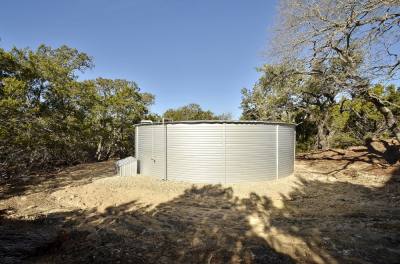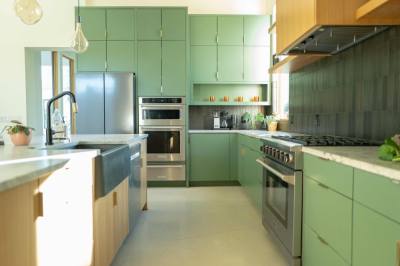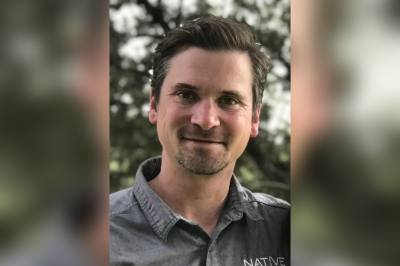In the face of ongoing drought and increasing density, local developers, such as Build Native, have found new ways to build with the elements, instead of against them.
Founded in 2007, Build Native takes a holistic approach to "green," net-zero building by creating homes with self-sustaining utility systems.
Co-founder and President Nick Ryza spoke to Community Impact about some of the innovations—and challenges—of net-zero, luxury building for the Texas Hill Country.
What does "net-zero" mean?
In simple terms, it means a home is built to produce as much energy as it consumes, so that throughout the course of a year, you net out at zero. This can be achieved a number of ways. ... Most of our homes have solar panels, high-efficiency HVAC systems and a tight envelope that can moderate the temperatures, spray-foam insulation, and really good windows and doors. And then a metal roof can create its own radiant barrier to reflect sunlight. ... But having a home with these things is only 50% of the battle. The design is the other half. ... So we may offer input to the architect about how much sunlight a home gets in the wintertime versus the summer.
How can builders account for the region's ongoing drought?
A lot of new development can strain the local resources, but the good majority of our homes use 100% rainwater collection, so they would not be hooked up to the [municipal] water utility. ... So instead, a typical home would have somewhere around 30,000 gallons of rainwater collection for a four-person family, and that's about a four- to six-month supply.
How does rainwater collection work, and what happens during dry periods?
We do a metal roof; it's perfect for collecting rainwater because it's a really clean surface. ... When that water hits the roof, it goes into the gutters. From the gutters, it goes into PVC pipes that run underground and then go into the rainwater collection tank. Whenever you need the water, you turn on your faucet, the pump kicks on, and it runs through a series of three filters. There are different carbon micron filters to filter out the particulates and also a UV filter to kill any kind of pathogens. ... We almost never hear about clients running out of water, even in the dry months, because the water is preserved in the tank year-round from the last rain event.
How has solar panel technology adapted to freezing weather and hail events in the region?
Sometimes, in the freak events [with] massive, baseball hail, the solar panels might get damaged, and when that happens, the homeowner's policy would pay to have them replaced. But generally speaking, they are tested by launching golf ball-sized ball bearings at the at the panels at about 70 miles an hour to make sure that that doesn't crack the glass. So they're built to be very strong. ...We can do battery backup [systems] as well, which has become pretty popular here recently after the bad winters.
How has green building changed in the region over the years?
In general, it's become a lot more popular to build with net-zero energy [in mind], and with more innovations entering the market, it's gotten less expensive. ... You still pay a slight premium to build [net-zero homes], but that premium usually pays for itself within three to five years as you save energy.
What do you hope for the future of green building?
I hope that every home is built the way we're building them at some point in the future. I think [in Austin] the [building] codes are leading in that direction, which is really good. I mean, it dilutes our expertise to some degree, but at the end of the day we are all winning a bigger war.








